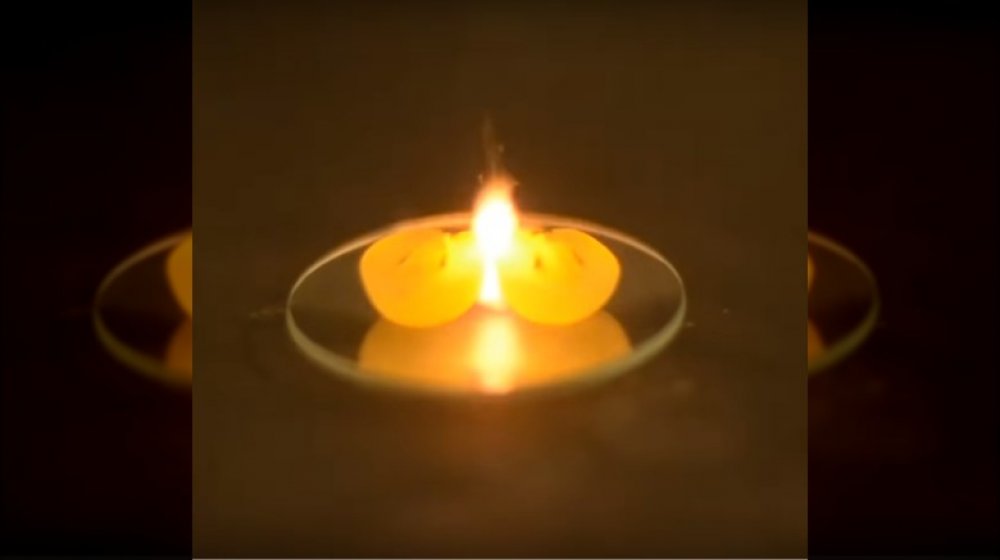You Should Never Heat Grapes In Your Microwave. Here's Why
The humble grape is quite a versatile fruit. Wineries turn grapes into the finest reds and whites. You can make jams and jellies with them, freeze them for healthy snacking, bake them into pies, and even use them with savory dishes such as pork and red snapper (via Food & Wine). But there's one thing you shouldn't do with grapes: Never nuke them in the microwave. We mean it. It's among the most infamous microwave no-nos.
Why? It has nothing to do with taste but everything to do with safety. Microwaving grapes has been a phenomenon well-documented in viral internet videos, which show that when a halved grape "gets blasted with radiation in a microwave," "tiny fountains of brilliant plasma — gas charged with ions — crackle from the spot where the grape halves connect," as noted by Live Science. For reference, plasma is naturally found in lightning and the sun, according to Smithsonian Magazine, but heating up grapes in the microwave causes them to burst into flames and send out sparks of artificially-created plasma. Yikes.
Can you microwave grapes as long as you don't cut them in half? Absolutely not. A recent academic study (yes, scientists have researched this) has proven that grapes don't even need to be connected to catch on fire and wreak havoc on your microwave.
The science behind microwaving grapes
Aaron Slepkov, a physicist at Trent University in Canada, discovered the "old grape-in-the microwave trick" on a website in 1995 and kept it in the back of his mind for years. He eventually co-authored an academic study, published in 2019, on the mechanics behind the viral parlor trick (via Popular Mechanics). In his research, Slepkov and his fellow researchers found that despite common belief, the "shape of the two grape halves and the little bridge of skin connecting them is not important," as reported in WIRED.
When microwaved grapes are in direct contact with or within millimeters of each other, energy becomes concentrated between them, thus generating sparks, according to Smithsonian Magazine. And this effect can happen with other objects. The magazine also mentioned that the study's co-authors concluded that microwaving "just about any grape-sized, water-based sphere, including large blackberries, gooseberries, quail eggs and even hydrogel water beads" can create sparks and ignite flames. So avoid heating up grapes or things like them in the microwave — unless you're looking to melt a hole in your appliance.

